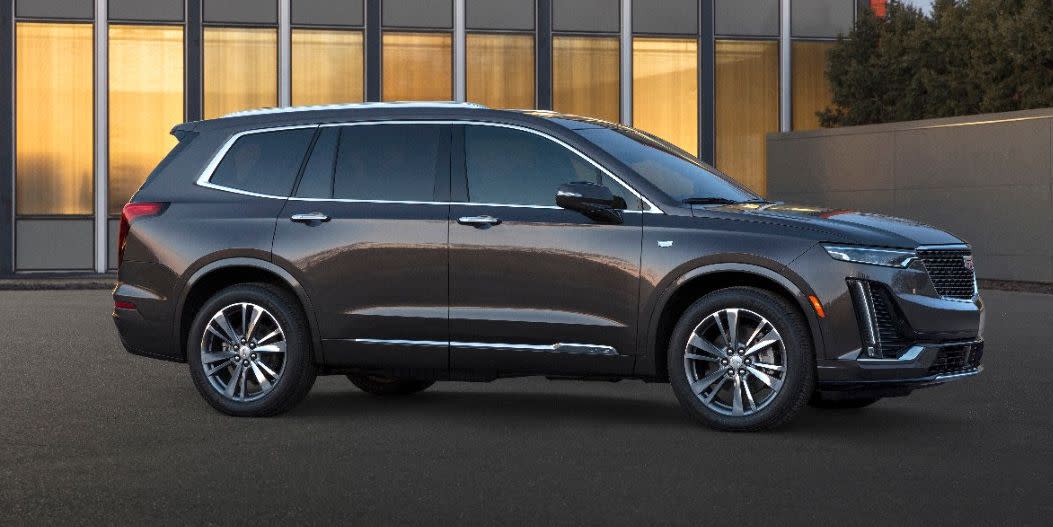Cadillac XT6 Will Offer Hands-Free Driving with Super Cruise

Cadillac's Super Cruise autonomous-driving technology will be offered as an option on the Cadillac XT6, although timing is unclear.
The system is designed for hands-free driving, unlike Tesla's Autopilot, which requires a driver to have a hand on the steering wheel.
Currently, Super Cruise can only be used on specially mapped, limited-access, divided highways.
The new Cadillac XT6 crossover will be offered with GM's hands-free Super Cruise system sometime after the vehicle's launch this year. Super Cruise, which controls vehicle speed and steering at up to 85 mph with no driver input, is among the most advanced driver-assistance systems on sale today. Unlike Tesla's Autopilot, in which the driver is advised to maintain contact with the steering wheel at all times, Cadillac's Super Cruise is designed for hands-free use.
The three-row XT6 goes on sale this year as a 2020 model, although Cadillac won't discuss the timing of Super Cruise availability. The company has said that the self-steering feature will spread to more vehicles in calendar year 2020, starting with the new CT5 sedan. When Super Cruise does arrive in the XT6, we expect it to be a $5000 or $6000 option that would bring the XT6's price to about $60,000. The announcement is more evidence that Cadillac's flagship technology has a future, even if its flagship sedan doesn't. U.S.-market production of the Cadillac CT6, the only vehicle currently available with Super Cruise, is slated to end after January 2020.
Super Cruise launched on the 2018 Cadillac CT6 two years after the company initially intended to deploy the technology. The system was supposed to establish General Motors as a front-runner in the race to develop self-driving cars. Instead, it has largely languished in anonymity with availability limited to the expensive and slow-selling CT6 sedan. Cadillac sold fewer than 10,000 CT6s last year. Super Cruise was fitted to 34 percent of the cars it sold at the end of 2018.
The company still intends for its Super Cruise, along with electric propulsion technology, to establish a reputation as a technology leader among luxury automakers. Cadillac president Steve Carlisle has said that Super Cruise will eventually be offered on every vehicle in the brand's lineup, although the company will wait for major redesigns before making the investment to integrate the technology.
Super Cruise works on divided, limited-access highways that have been mapped and approved for use. Cadillac launched with 130,000 miles of mapped roads in the United States and Canada and is now in the midst of adding another 70,000 miles. While Super Cruise can negotiate curves, keep the vehicle centered in its lane, and slow or accelerate with traffic, the driver still must pay attention to the road when Super Cruise is in use. The system doesn't stop for or steer around objects such as a construction barrel, debris, or wildlife in the vehicle's lane. To ensure the driver is alert, a driver monitoring system uses an infrared camera to deduce where the driver is looking. If the system detects the driver is not paying attention to the road, it will attempt to refocus the driver's attention. Eventually, Super Cruise will slow the vehicle to a stop and activate the hazard lights if the driver doesn't respond.
Super Cruise is both more capable and less capable than Tesla's Autopilot, which can be used on a greater number of roads but doesn't sanction hands-free use. Autopilot can also change lanes and negotiate some highway interchanges. In C/D's experience, though, Autopilot is less reliable and more erratic than Super Cruise. The Tesla system is more likely to be confused when two lanes merge, and it occasionally makes sudden, unnecessary, and alarming steering inputs. BMW's Traffic Jam Assistant, offered in vehicles such as the X5, allows hands-free operation on limited-access roads and at speeds under 37 mph.
You Might Also Like

